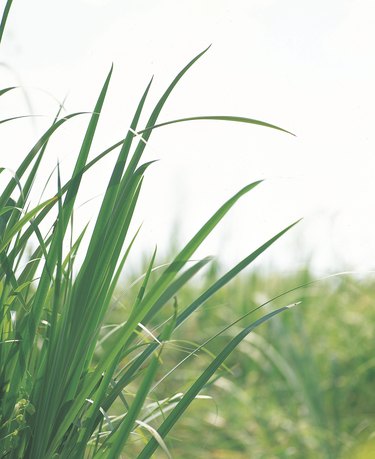
Prairie grass depends on fires for rejuvenation. Fire helps maintain the ecosystem, helps to prevent woodlands from encroaching on dominate grasslands and prevents shrubby plants from taking over. Fire cleanses the landscape and allows grass varieties to grow back more vigorous. It occurs naturally and as part of a prescribed burn to maintain grasslands.
Grazing Animals
Video of the Day
Wildfires help maintain the Great Plains of North America. Foraging animals depend on the miles of prairie grass to sustain them. The grass varieties require wildfire to maintain the balance and create healthy growth. Without occasional fires, woodlands would have encroached across the prairie and reduced the wide array of grass varieties that grazing animals depended upon. A fire can help increase the nutritional value of the grass and make it more abundant, according to the University of Nebraska.
Video of the Day
Perennial Grass
Perennial grass varieties have the ability to withstand fire's damaging effects. The top growth of the grass will suffer damage or death, but the growing points of the plant reach deep below the soil. Fire usually impacts only the top 25 percent of the soil, according to the University of Nebraska. The well-established roots of the perennial grass remain untouched by the fire's intensity. The grass quickly grows back after a fire and often produces more abundant growth.
Annual Grass Varieties
Annual grass varieties can suffer severe damage and death from a fire during its active growth cycle. The grass' short life span does not allow it to rejuvenate and regrow from its root system after the fire. Controlled burns can help eliminate invasive, exotic annual grass varieties. The seeds of most grass varieties, including annual grasses, often can survive fire. If the invasive annual grass has a sizable seed bank, the problem grass seeds can quickly germinate in the burned area and take over before the native perennial grasses have a chance to grow back from the roots.
Prescribed Burns
Controlled, prescribed fires can help cool-season grass varieties succeed if they occur in the early spring months. Warm-season grass varieties grow well if the burn occurs in the late spring or early summer. Cool- and warm-season grass varieties should stand around 1 to 2 inches tall before a prescribed burn. Burning the grass early in its growth cycle helps to ensure that the grass' root system still retains ample food reserves. The abundant food reserves help to create rich growth after the burn. Yearly prescribed burns help increase pastureland grass varieties.